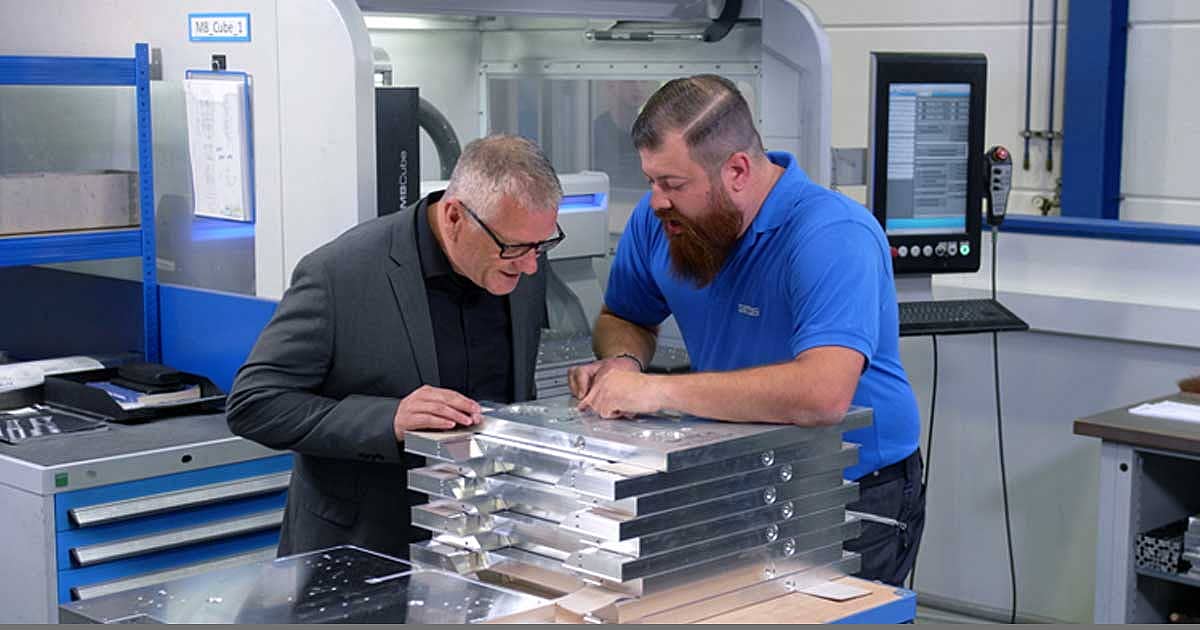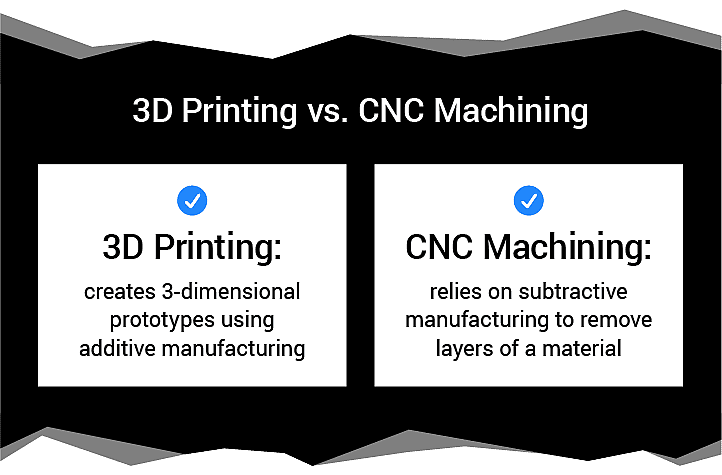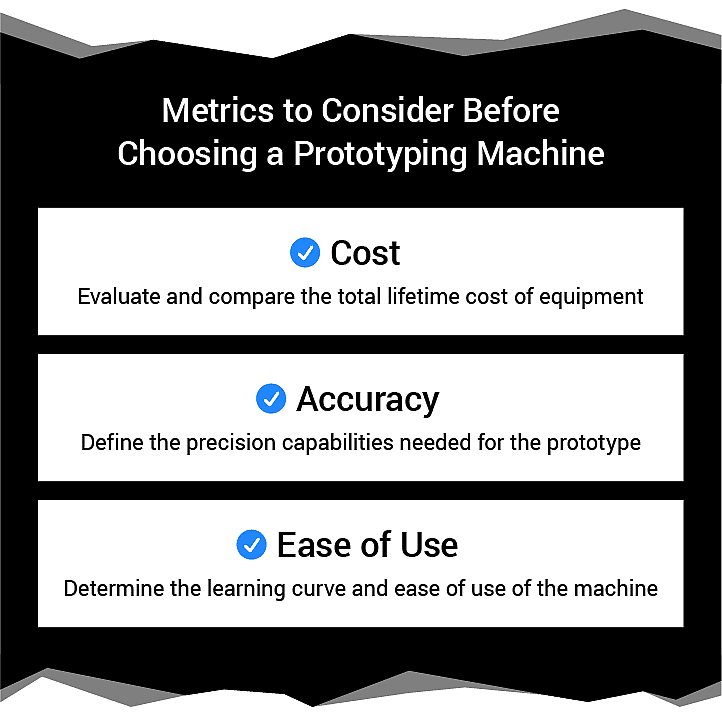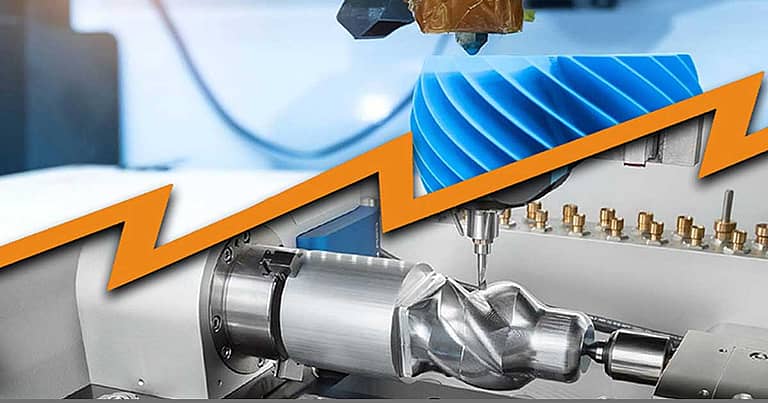
Rapid Manufacturing with CNC – Filling Those 3D Prototyping Gaps
A common misconception in the manufacturing world centers upon the belief that you must choose between 3D printing and CNC when it comes to prototyping and rapid manufacturing. In other words, if you’re 3D printing, you can’t or shouldn’t consider CNC and vice-versa. While current trends seem to suggest some veracity to this belief, the industry is ever evolving, presenting solutions that bridge these two disciplines with great results. Let’s look at getting around the 3D Prototyping Gaps.
Here, we take you through an overview of 3D printing and CNC milling, dispel a few myths, and demonstrate how you can integrate both processes to fill in any prototyping gaps to expand your manufacturing capabilities and versatility.
Understanding the Merits of 3D Printing and CNC Machining
Both 3D printing and CNC machining offer advantages and applications that are better suited to a project, depending on what’s involved. 3D printing creates 3-dimensional prototypes using additive manufacturing while CNC milling relies on subtractive manufacturing to remove layers of a material.
While both increase manufacturing productivity, the common misconception is that a commitment must be made to one over the other.
The fact is, both 3D printing and CNC milling have limitations. However, those shortcomings can be addressed by using both technologies in tandem to produce a finished prototype.
With 3D printing, the process doesn’t lend itself to the speed required for mass production, and it’s often confused as the cheaper option of the two.

CNC milling remains the preferred prototyping choice for a variety of industries; however, the pervasive misunderstanding that CNC processes require highly skilled or trained machinists leads some to incorrectly assume that CNC milling is a more involved and costly proposition.
Deciding to make a prototype with a CNC machine or 3D printer really comes down to price, size of the part, and the materials required.
Those three metrics can define the capabilities of 3D printing and CNC milling in a limiting and divisive way; competing, rather than potentially complementing the other.
Ultimately, this is more reflective of human nature. People gravitate towards what they like and what they are familiar and comfortable with. That can lead to a fierce loyalty towards one process over another, which is not indicative of actual capability or application. Being familiar with one method does not mean it’s the right method for every problem or project.
Diversifying your toolbox streamlines your processes, delivering better results. Mythbusters’ Adam Savage said, “I believe that inside every tool is a hammer.” In other words, the outside packaging might look different, but the end goal or solution is the same.
The challenge here is to know where 3D printing is a good fit, where CNC milling is a good fit, and where the two might overlap in an effective collaboration.
By way of example, you could use 3D printing to create fixturing for parts that are then CNC milled. Let’s take a cell phone enclosure for instance. It’s possible to mill that on a DATRON vacuum table, but then use a 3D printer to finesse the geometry and create soft jaws or use custom formed vacuum fixtures to hold 3D sculpted shapes. In other words, augment one process with another.
Let’s dive into a few of the myths that perpetuate the current perception of 3D printing vs. CNC milling.
Mythbusting #1: Costs
Evaluating this from a total lifetime cost of equipment, here’s what you need to know.
Current perception positions 3D printing as the cheaper option, compared to CNC milling. The reality is affordability of one over the other is not quite so cut and dry. You can buy inexpensive 3D printers with questionable capability. The majority of 3D printers, regardless of initial cost, do not require a huge investment for upkeep.
This, too, depends on capability. Metal 3D printers that use selective laser sintering (commonly known as SLS) present considerable materials and maintenance costs. Along with that, there’s the added risk introduced with material handling; the dusty printing media can be harmful to human health, not to mention explosive. Obviously, this requires precise handling and additional expertise — another investment.
The same goes for CNC mills. Owning a CNC can be just as expensive as a high-end 3D printer. Likewise, a desktop CNC machine can be just as affordable as low end 3D printers.
All told, the cost spectrum is a commonality between these two processes — you pay for what you get and what you get can run the gamut when it comes to affordability.
Mythbusting #2 — High Accuracy and Tolerance
Again, the prevailing thought is that 3D printing should be the preferred option over CNC printing. I don’t think this is the prevalent thought on 3D printing vs CNC. I think it’s more commonly believed that CNC is better than 3D printing here. I would maybe say instead:
One aspect where CNC milling excels over 3D printing is in it’s precision capabilities.
While there have been significant improvements made to 3D printing capability with respect to high accuracy, the final result pales in comparison to CNC machined parts.
Depending on what the work requires, with respect to tolerance, could present a unique opportunity to combine the two applications.
Maybe your design is more aesthetically-driven and does not need to meet a particular dimensional tolerance… except for one particular feature that requires a specific fit. Simply 3D print that part, bring it to the DATRON and finish the features that must meet those tight tolerances.
Mythbusting #3 — Ease of Use
Getting back to an earlier point, the assumption that CNC milling requires advanced expertise and highly trained machinists can cause someone to choose 3D printing. Again, this is a misconception of what CNC milling involves.
In fact, given the explosion of 3D printing in the industry over the past two decades, a new bar has been set for what people expect when they want to make things. Yes, 3D printing is simple and the learning process is shorter, with most of the work already done in the software.
However, there is a learning curve regarding types of materials used, the requisite hardware, and how to avoid bonding issues. What people really want is a CNC mill that runs similarly to a 3D printer in that it features a flatter learning curve.
This is where DATRON comes in with user friendly machines and controllers that don’t require as much knowledge as a typical CNC machine. Our goal is to supply an easy, accessible experience for the end user by eliminating the often-contrived experience commonly associated with CNC milling. What we’ve done with DATRON machines is make them more approachable for the masses.
Again, this is a nod to what 3D printing has done for additive manufacturing; creating a process accessible enough for children to use it.
The intuitive interface of the DATRON machines makes it possible for your kids to walk right up and operate them after only a few minutes spent getting familiar with the format.
3D printing has pushed us to think outside the box, which has enhanced ease of use and made the collaboration between 3D printing and CNC milling more seamless.

Collaborative Efforts Equal Better Outcomes
By isolating how both 3D printing and CNC milling can work together, you can push the boundaries on material limits and, ultimately, end up with a better quality finished prototype. In many cases, you can even produce a finished part and lead right into manufacturing.
As 3D printing moves toward the ability to print in most materials, including metals, much of this potential versatility falls beyond the reach of typical users, unless they’re willing and able to make a significant up front investment. Understandably, most people are not comfortable with acting as guinea pigs for new, costly processes.
For this reason and until these advances are better solidified, CNC milling presents a smarter, reliable alternative.
An example might be the case of prototyping in plastic, but needing a more substantial material in the end, like a rigid metal. This is common with respect to ergonomics, especially in consumer electronics. In these cases, the weight of the piece is just as important as its feel and aesthetics. Lightweight plastic might signal a cheap product compared to the heft of a metal object, which consumers often denote with quality.
In this case, CNC milling — subtracting a small amount of material in order to arrive at a heavy object, compared to 3D printing all of the required material — saves considerable time.
Understanding the merits of 3D printing and CNC milling on their own makes it possible to envision how the two processes can support each other for better quality prototypes.
What modern manufacturers are increasingly tasked with is recognizing the tools available to them for their hammer quality, as suggested by Savage.
Wielding the solutions provided by 3D printing and CNC milling is possible, with DATRON bridging the gap between the two, allowing you to do both, which means doing more.
Always ready to discuss how our solutions can enhance your manufacturing processes, we invite you to reach out for more details on how to fill 3D prototyping gaps by adding CNC capabilities with DATRON.





